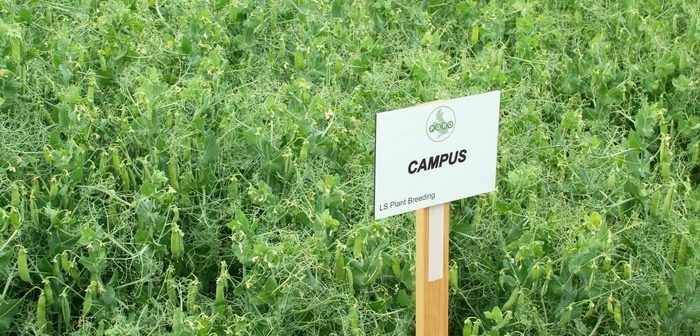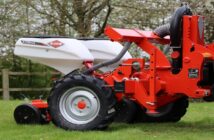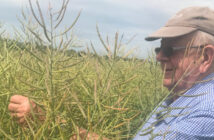Growers planning their spring cropping, but wary of possible harvest hassles with combining peas, should be look to the large blue pea Campus, which brings a new benchmark for standing power.
“The standing power of all the other large blue peas on the PGRO Recommended List hovers around the ‘5’ mark, while Campus stands strongly above the rest with an ‘8’,” explains Theo Labuda, managing director of LS Plant Breeders Ltd (LSPB). “This makes it far easier to combine – there’s no point in varieties that produces potentially good yields of quality peas if they have to be picked off the ground.
“The standing ability of Campus at harvest could change the way in which farmers view the crop. As many know to their cost, peas have little ability to stand erect compared to, for example, field beans. This makes the pea crop susceptible to disease and reduces the harvest index.
“Campus also has a longer straw, and that aids drought resistance – an attribute that is useful on lighter land and in drier summers.
“It is early to ripen which will aid harvest planning, as in most years and conditions Campus will be cut before the wheat harvest starts, spreading the harvest workload.
“The good agronomic package is rounded off by resistance to pea wilt and to downy mildew.”
“Turning to the marketplace, there are significant opportunities for large blue types in the packet trade, for canning, for micronising and for export. For all these markets, samples with good colour, cooking and soaking characteristics are in demand and attract a premium. And the harvestability of Campus is the foundation of a good sample.”




